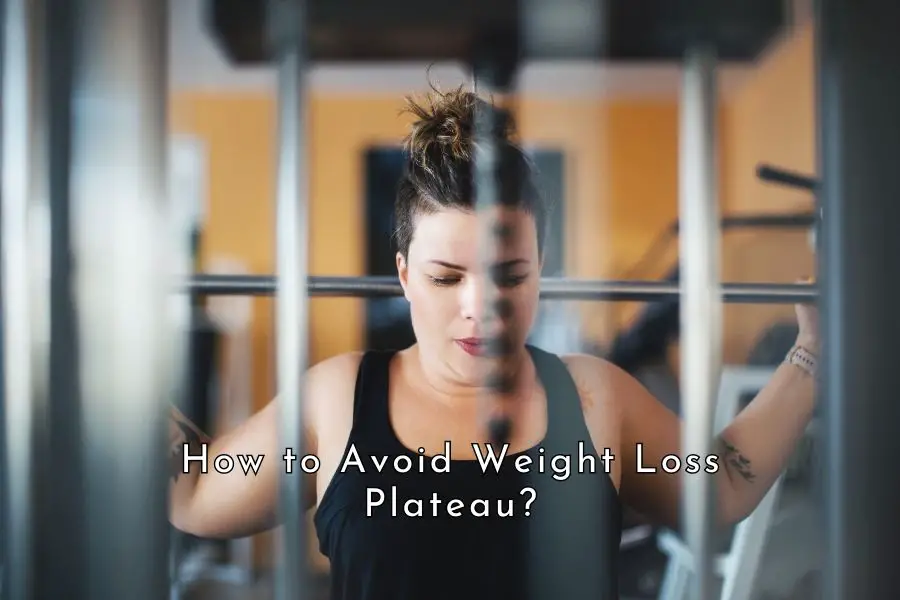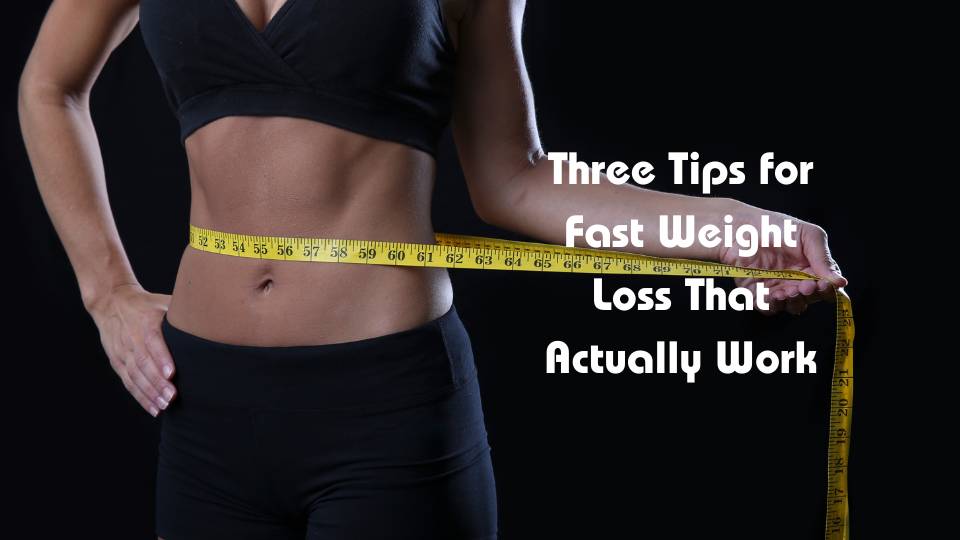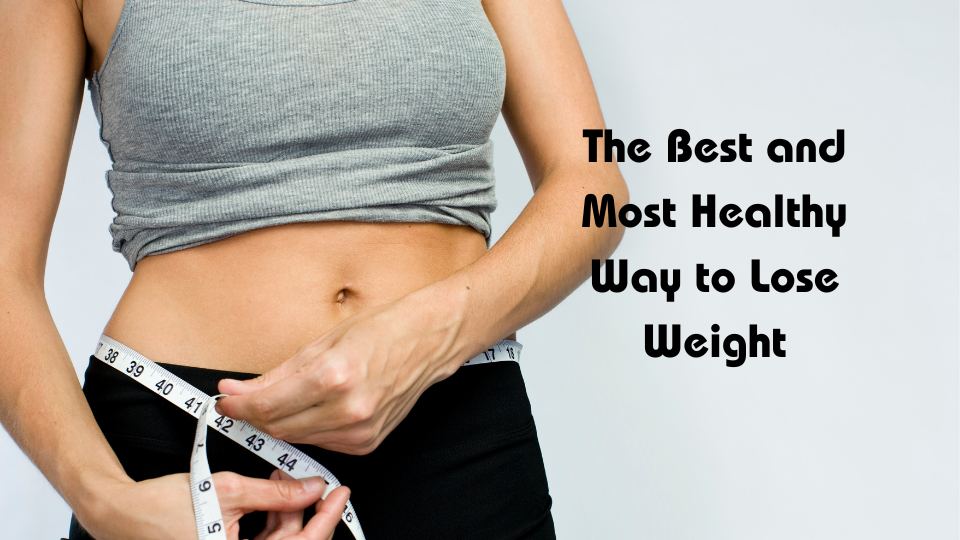In the second post of this series on how to lose weight fast with the carnivore diet, we will look at how to exercise intelligently to accelerate weight loss (here is the link to the first post of the series).
As I wrote in this post, you most certainly will lose weight naturally on the carnivore diet. However, exercises and general physical activities have so many health benefits and can help accelerate weight loss if you know how to do it right. So what types of exercises are best to support weight loss?
The best exercises to support weight loss are resistance training and HIIT because both of these exercises help burn more calories overall than normal cardio workouts. In addition, any increase in overall physical activities with moderate intensity, sufficient duration, and consistency can also support weight loss and provide many health benefits.
Content
- A carnivore diet and an active lifestyle are both encoded in our genome
- Evidence on the effectiveness of exercises on weight loss
- Resistance training builds muscles and help you lose weight effectively
- HIIT burns calories and accelerates fat loss and weight loss
- Accidental and other physical activities add volume and help you lose weight
- Three elements of an effective exercise program
- Conclusion
A carnivore diet and an active lifestyle are both encoded in our genome
We are born to eat meat
The main reason why so many people significantly improve their health on the carnivore diet is this diet is consistent with our genetic make-up.
The totality of evidence from human physiology and genetics, archaeology, paleontology, and zoology shows that our ancestors were exclusively meat-eaters for millions of years and thrived on this diet. The human body is, therefore, genetically suited to a meat-based diet.[1, 2]
If human history is reduced to a 24 hours timeline, for approximately the first 23 hours and 55 minutes, meat was mostly what we ate. But with the appearance of agriculture, during the last 5 minutes, plant food intake has increased exponentially. And during the last 5 seconds, with the invention of fast food and soft drinks, ultra-processed food has become a prominent feature of the modern-day diet in every corner of the globe.
Because changes at the genetic level are very slow, the human body has not been able to adapt to a predominantly plant-based diet or a junk food diet. The discordance that exists between today’s diet and the diet our genes are suited to is the root cause of so many chronic diseases of modern civilization.[3]
The solution is simple: go back to our ancestral roots and eat what we are meant to eat.
We are born to stay active most of the time
Another part of the equation often not mentioned in the carnivore community is that for millions of years, our ancestors also lived an active outdoor lifestyle.
They spent a large amount of daily energy expenditure on activities such as food and water procurement, social interaction, escape from predators, and maintenance of shelter and clothing. The human body, therefore, has also been genetically adapted to this active lifestyle.[4]
The massive improvements in technology thanks to the agricultural revolution, the industrial revolution, and the recent digital revolution led to a substantial deviation from the active hunter-gatherer lifestyle that we are supposed to live. And this marked deviation has had profound implications for modern humans’ health and well-being.[5]
Similar to our diet, if human history is reduced to a 24 hours timeline, for approximately the first 23 hours and 55 minutes, we spent most of our time outdoors, hunting, gathering, building shelter, or running away from dangers. During the last 5 minutes with the birth of agriculture, the agricultural revolution, and the industrial revolution, physical activity has been decreasing at a rapid rate.
And during the last second or so, for many of us in the Western world, a sedentary lifestyle has become the norm. Our work involves sitting long hours at our desk, in front of a computer. We also use a lot of labor-saving devices at home in our daily chores. Most of us drive or use public transport rather than walking or cycling. Many of our leisure activities involve being sedentary. Our lifestyle couldn’t be further away from our ancestral roots.
The solution is also simple: go back to our ancestral roots, mimic the way our ancestors lived for most of human history, and move as much as possible.
This is what we will look at below, not just for weight loss but for the benefits of our physical and mental health.
Evidence on the effectiveness of exercises on weight loss
There are so many benefits associated with being physically active, from better sleep quality, better brain health, stronger bones and joints, lower risks of heart attack, improved mental health to better sex. But when it comes to weight loss, evidence of its benefit is not very clear. Let’s have a look at it below.
What does the evidence tell us?
The present American College of Sports Medicine recommendations for moderate-intensity physical activity to maintain health and promote weight loss are as follows: [6]
- Maintaining and improving health: 150 minutes per week
- Prevention of weight gain: 150-250 minutes per week
- Promote clinically significant weight loss: 225-420 minutes per week
- Prevention of weight gain after weight loss: 200-300 minutes per week.
However, exercise programs consistent with these public health recommendations are found to produce only modest weight loss of less than 2 kg. Based on the present literature, in general, weight loss from exercises alone is modest and it is possible to achieve no weight loss at all unless there is a substantial volume of exercise involved.[7]
Why is it hard to lose weight with exercise?
The above doesn’t seem to make any logical sense. Physical activities require energy, so why don’t exercises result in much weight loss? Possible reasons for these findings are:[8, 9, 10, 11, 12]
- Physical activities don’t account for a significant proportion of total calories expenditure. Your body spends energy on three things:
- i) Keeping all its systems functioning correctly when at rest. This is called the basal metabolic rate and it accounts for the largest amount of energy expended daily, from 50% to 80% of your daily energy use
- ii) Digesting foods and drinks. This is called the thermic effect of food. Thermogenesis accounts for about 5% to 10% of your daily energy use
- ii) Physical activities. A moderately active person with 30 to 45 minutes of moderate-intensity physical activity per day can expect to spend 20% of their daily energy on physical activities
- Exercises don’t burn as much calories as you might think. For example, a 155-pound (70 kg) person will burn 133, 216 and 288 calories respectively from walking, swimming and running for 30 minutes. This is a reasonable amount of exercise. However, if you have a chocolate muffin afterward, though it doesn’t seem to be much, you will have consumed about 300 calories in a couple of minutes, far exceeding the calories burnt from the 30 minutes of exercise
- People have the tendency to eat more when they start exercising. This is expected because exercises can increase hunger and appetite. People also tend to eat after an exercise as a reward for having done something positive and, as result, may offset any calories burnt during the exercise
- People may alter their non-exercise activities, for example becoming less active outside of exercise time because they think they have earned the right to loaf around
- Exercises can increase muscle mass. You may weigh the same but lose fat and increase muscle mass at the same time. Because muscle tissues are denser than fat, they take much less room, and you will look slimer with a smaller waist circumference despite weighing the same.
How can you still use exercises to support weight loss?
The current literature on exercises and weight loss doesn’t look very encouraging. However, with the insights from above, you can still use exercises to potentially lose weight by adopting appropriate strategies.
- Boosting the basal metabolic rate. As noted above, the basal metabolic rate is the biggest of all, i.e. your body burns most calories to maintain its basic functions. Therefore, to support weight loss, you need to focus on exercises that help boost this basal metabolic rate. Both resistance training and HIIT can have a positive impact on the basal metabolic rate. We will look at those below
- Increasing overall level of physical movement daily. Because exercises don’t burn as much calories as people often think, in order for exercises to have any significant impact on your weight loss progress, you will need to significantly increase exercise volume. This is consistent with our ancestral way of living. However, this does not necessarily mean spending more time in the gym. You can achieve this by increasing accidental exercises and doing other physical activities that you enjoy. We will look at this too later on in the post
- Controlling food intake. People have the tendency to eat more as the level of physical activities increases. To avoid overcompensating for the increased physical movements, you need to eat food that is highly satiating, hunger-suppressing and low in calories. This is what we covers in the first post of this series. High protein intake is the answer. In addition, if you find that you always have to eat something after an exercise, exercise on an empty stomach and make sure you have a high protein meal after your exercise.
Resistance training builds muscles and helps you lose weight effectively
Resistance training can help you lose weight effectively because it can help you burn more calories overall than cardio exercises due to a positive impact on the basal metabolic rate.
What is resistance training?
Resistance training is any kind of exercise in which your muscles are forced to contract against an external resistance.
Some examples of resistance training are:
- Exercises using your own body weight for example push-ups, chin-ups, squats, lunges and mountain climbing
- Exercises using resistance bands which are just elastic bands with different levels of resistance
- Lifting free weights such as dumbbells, barbells and kettlebells or just lifting big jugs filled with water, sand, or concrete
- Lifting with weight machines, for example, lat pull-down, chest press, leg curl, pull-up and dip machines.
These exercises need to create sufficient resistance in order to cause muscle growth to support weight loss. This is because when the resistance is sufficient, it will cause small tears in the muscle fibers and your body will then work to repair those tears and result in muscle growth.
Why resistance training is very effective for weight loss
Resistance training is very effective for weight loss because it helps you burn more calories overall than cardio exercises. If done properly, it also helps build muscles that increase resting metabolism, i.e. increasing the basal metabolic rate. In particular:
- Resistance training burns more calories than cardio. Although resistance training burns less calories than cardio during the actual exercise, your body will burn more calories in the hours or days after a resistance training exercise compared to a cardio exercise [13, 14, 15, 16, 17, 18]
- Resistance training helps build muscles which increase resting metabolism. Research has shown that resistance training can significantly increase the resting metabolism, or how many calories you burn when not exercising. This is because muscles burn more calories at rest than fat and some other tissues. The resting metabolic rate of skeletal muscle was 12.6 compared to only 4.4 for adipose tissue and 11.6 for most other tissues, i.e. muscles burn nearly 3 times more calories than fat tissues.[19]
Though cardio exercises can build muscles to some extent, they generally don’t provide the kind of progressive overload that resistance training can that stimulates and sustains muscle growth.
Resistance training also has many benefits beyond weight loss including better body composition, stronger bones, improved mobility and balance, improved cognitive function, better sleep quality, and increased self-esteem.[20]
How to resistance train correctly to build muscles?
To build muscles with resistance training, follow the 4 simple but fundamental rules below:
- Create sufficient resistance for your muscles. As mentioned above, your muscles won’t grow if the resistance force is not sufficient. By lifting weights heavy enough, for example, you cause micro tears in the muscle fibers. Your body will then work to repair these tears and result in muscle growth
- Feed your muscles properly. Your body needs the right material to repair those micro tears for muscle growth and the best is high quality proteins. If you are already on the carnivore diet, you don’t have to worry about this, you are eating the best quality proteins possible already
- Give your muscles enough time to recover. Sometimes, less is more. Your body needs time to repair the micro tears so you need to give it sufficient time after each training session. Overtraining will have the opposite effect of what you want
- Follow the progressive overload principle. To continue stimulate muscle growth, you need to continually increase the workload put on your muscles. Muscles won’t keep growing unless they are continuously forced to. So, lift heavier weight and increase reps.
How to start resistance training?
This is a big topic on its own which I will cover in a separate post later, but below are a few ideas for you to get started.
- Choose the right resistance training for you. The best resistance training for you is the one that you like and are most likely to stick to consistently. This will produce results. If you like the gym environment, go for it. If you feel more comfortable doing in your lounge room with a few pairs of dumbbells, stay at home
- Create a schedule and stick to it. For example, if you decide to start weightlifting with your dumbbells two days a week, on Tuesday morning and Friday morning, for 15 minutes each for 4 weeks, put these in your calendar for the next 4 weeks, and treat them as your work appointment. Get up, do those exercises and get them out of the way before you do anything else
- Start with light weight and increase the weight gradually. Resistance bands, a couple of filled water bottles or a couple of lightweight dumbbells can be good to start with if you haven’t done any kind of weight training before. You then need to gradually increase weight if you want your muscles to continue grow
- Make sure you do warm up, warm down and prioritize good forms. Poor forms can cause injuries and may not produce the best results for a given amount of time
- Give your body time to rest in between training sessions to recover and build muscles. Some people make the mistake of over-training and don’t give their body sufficient time for actual muscles synthesis. A couple of days a week should be enough. If you are eager, the maximum is every other day. If you want to do it every day, you need to be specific about which muscle groups you are training on which days
- Ensure sufficient quality protein intake to give your body the material it needs for muscle repairs and growth. This is what has been covered in the first post. Animal proteins are the best, they are complete proteins that are highly bioavailable and free from plant toxins.
HIIT burns calories and accelerates fat loss and weight loss
Research shows that HIIT can help you lose weight, reduce weight circumference and gain muscles.[21, 22, 23, 24, 25]
What is HIIT?
HIIT refers to high-intensity interval training that alternates between short periods of high-intensity and low intensity or recovery.
HIIT can be done with many types of exercises. For example, you can run for 20 seconds as fast as you can, then walk or jog slowly for 60 seconds to recover, then repeat. Or you can cycle on a stationary bike as fast as you can for 20 seconds, then pedal slowly or rest for 90 seconds, then repeat.
During the high-intensity period, your heart rate would increase rapidly to about 80-90% of your maximum heart rate. Due to the level of intensity of this kind of exercise, you would only need to do about 10 to 20 minutes each session. This is one of the advantages of HIIT: you don’t need to spend hours in the gym but still get many benefits.
Why HIIT is great for weight loss?
HIIT is great for weight loss because it can help you burn a lot of calories, increase metabolic rate and reduce belly fat.
HIIT burns a lot of calories
You can burn a lot more calories with HIIT than with other types of exercises such as moderate-intensity cardio and resistance training.
For example, Falcone et al (2015) compared calorie expenditure of single sessions of HIIT (20 seconds of maximum effort followed by 40 seconds of rest), resistance training, treadmill, and cycling. They found that HIIT burns significantly more calories than the other 3 exercises. [26]
In particular, the calorie expenditures of HIIT, resistance training, treadmill, and cycling were 12.62, 8.83, 9.48, and 9.23 kcal·min respectively. That means the HIIT exercise in this study burns from 33% to 43% more calories than other exercises.
HIIT increases metabolic rate
Studies have found that HIIT can increase one’s metabolic rate for hours after a workout. That means you not only burn more calories during a high-intensity workout but more calories at rest afterward compared to other types of workouts.[27, 28 29, 30]
For example, in a study by Wingfield et al (2015), 20 active women took part in aerobic endurance exercise, high-intensity interval running, and high-intensity resistance training. It was found that high-intensity interval running resulted in the largest increase in post-exercise resting energy expenditure, i.e. the largest increase in the basal metabolic rate. [31]
In a study by Paoli et al (2012), 17 males carried out high-intensity interval resistance training and traditional resistance training in 2 separate sessions. Traditional resistance training resulted in only 5% increase in the basal metabolic rate at 22 hours post-exercise. However, high-intensity interval resistance training resulted in 24% increase in the basal metabolic rate at 22 hours post-exercise.[32]
HIIT burns belly fat
In a meta-analysis of 39 studies involving 617 subjects, it was found that HIIT significantly reduced total abdominal fat as well as the troublesome visceral fat which wraps around your internal organs deep inside your body. It was also found that running was more effective than cycling in reducing total and visceral fat mass.[33]
How to start HIIT for beginners?
Below are a few suggestions for you to start HIIT straight away:
- Choose the right HIIT exercise. Find the type of exercise that you think you would like to do. As mentioned above, there are many ordinary exercises that can be transformed into a HIIT. If you just start out, choose the one that you like the most or are most likely to maintain
- Set a specific and realistic goal. Setting too ambitious and too vague goals won’t get you anywhere. For example, a goal of 2 times a week, each time for just 10 minutes for a 4 week period is specific and seems achievable. After you’ve successfully completed the initial 4 weeks, do a review and either keep going if you are happy with the current plan or set a new goal and/or switch to a new type of exercise
- Make a detail plan. For example, 5 minutes warm-up, 5 reps of 20 seconds of maximum effort running and 60 seconds of walking, 5 minutes cool down
- Schedule it. The best way to do it is to put it in your calendar and treat it like an appointment with your doctor or accountant
- Make it happen. Follow the 5-second rule which is simply to act within 5 seconds when it’s time or your brain will quickly come up with many excuses and kill it. When it’s time for your exercise, put on your shoes, head out the door, do your warm-up, set the timer and start running. It takes time to form a new healthy habit, but once it’s there, it’ll be a breeze.
Accidental and other physical activities add volume and help you lose weight
In addition to resistance training and HIIT, accidental and other exercises can help you lose weight too. Most of us don’t get enough exercise, any increase in the level of physical activities will be beneficial.
If you hate repetitions and hate exercises, resistance training and HIIT may not be right for you. In this case, accidental and other physical activities that are more functional and fun will become even more important to help you lose weight and keep you fit and healthy.
As mentioned above, for millions of years, our ancestors spent a large amount of daily energy expenditure on activities such as hunting, gathering, escaping from predators, building and maintaining shelters, and social interaction. This kind of active lifestyle is encoded in our genome.
Technological advancements and improvements in living conditions, unfortunately, have many downsides. We are more sedentary than ever.
To be healthy, we have no choice but to do what our genetic dictates: move as much as possible. Thirty to forty minutes of exercise a day are definitely not enough if we have a sedentary job. We need to find ways to add volume to make a difference by mimicking the lifestyle of our ancestors.
Let’s have a look at what we can do below.
Accidental exercises
Accidental exercises are the physical activities that you do throughout the day that are not ‘exercises’ per se. For example, walking to work, vacuuming and cleaning the house, and taking the stairs instead of the escalator.
To boost your accidental exercises substantially, start by keeping a detailed diary of your daily movement for a week. Note down details like the exact activity, starting and ending time, its duration, and the level of intensity (low, moderate, or intense).
Here is a free physical activity diary template that you can print out and fill in for one week.
Have a look at the diary at the end of the week and see what you can do to increase your physical activities, for example, adding a short stroll after lunch at work, swapping a short drive for a bike trip to work, or increasing intensity (power walk instead of a leisurely stroll).
Below are some suggestions:
- Walk, bike or skateboard to work if possible
- Take public transport and stand up instead of sitting down on the bus or the train
- Get a standing desk at work or at least get up from your desk every hour or so if your work allows
- Leave the phone at your desk and go for a stroll at lunch break
- Get up every hour at work to get a glass of water or just for a minute walk
- Taking the stairs instead of the elevator
- Do stretching, row on a rowing machine, or ride a stationary bike while watching TV
- Park further away from your destination and walk the rest of the way
- Get off the bus or train station one stop early and walk the rest of the way
- If you have small children, take them to the playground often and actually play with them rather than sitting down on a bench and look at your phone
- If you have a dog, walk with it twice a day instead of once and walk further
- Walk or cycle or take public transport to the shop if possible
- Cleaning your house instead of hiring someone
- Mowing the lawn and doing your own gardening instead of hiring someone
- Go hiking and having a picnic in the bush instead of eating out at a restaurant with friends or relatives
- Always look out for a more active form of entertainment, for example, organising a dance party or a rock-climbing party instead of a normal party.
Other physical activities
In addition to the above accidental exercises, you can actively engage in physical activities that you enjoy doing, for example:
- Pick up a sports
- Learn dancing
- Learn martial arts
- Go swimming in the ocean
- Take yoga class
- Rediscover old hobbies or find a new one that involves physical activities like woodwork, hiking, and rock-climbing.
Three elements of an effective exercise program
There are three elements of an effective exercise program: intensity, duration, and consistency.
You need sufficient intensity and duration to produce results and enjoy the health benefits of the exercises.
Generally, the more intense you can perform the exercises, the shorter duration you need to do them for.
However, consistency is a must to produce results. No matter how intense or effective an exercise can be, if you don’t perform it regularly, you won’t benefit from it.
So, please choose the exercises that you think you are most likely to stick to in the long term. If you don’t like exercises at all, you will need to substantially boost your overall physical movements through a lot of accidental exercises, active sports, and active recreational activities.
Conclusion
In addition to the carnivore diet, being physically active is an integral part of the ancestral lifestyle.
Resistance training and high-intensity interval training are the best exercises for weight loss. However, a substantial increase in overall physical movements via accidental exercises, sports, and recreational activities can support weight loss as well as provide many health benefits.
In the next post, which is the third part of this series, I will cover how to create a positive mindset to further support weight loss.
Disclaimer: The information in this post is for reference purposes only and not intended to constitute or replace professional medical advice. Please consult a qualified medical professional before making any changes to your diet or lifestyle.
Photo credit: Total Shape





